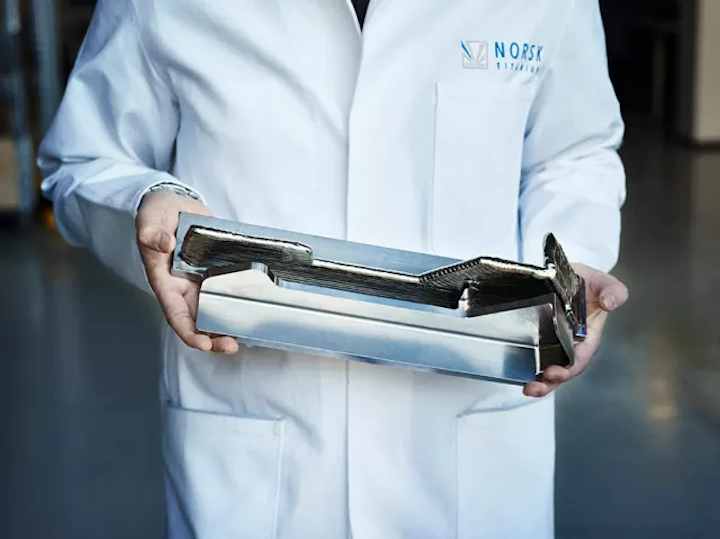
On the ground floor of 3D printing technology for years, aerospace manufacturers first began adopting the various additive manufacturing (AM) processes for use in prototyping.
With each advance in the technology, they have been there as AM was used for the creation of tooling to, most recently, the mass manufacturing of end parts.
GE increased its role in the industry dramatically when it acquired two metal 3D printer manufacturers and formed GE Additive. GE, however, isn’t the only aerospace company that’s taken AM to the skies. Also ahead of the pack is Boeing, which has been flying 3D-printed parts since 2003.
As a manufacturer with a leading role in the 3D printing space, Boeing may be able to offer key insight into the various platforms that make up AM and how they are currently being used in aerospace, as well as how they can and will be used in the industry in the future. To gain some of this insight, ENGINEERING.com spoke to Leo Christodoulou, director of Structures and Materials, Enterprise Operations and Technology at Boeing.
Back in 2003
As the number two federal contractor, behind Lockheed Martin, Boeing was awarded over $16 billion in taxpayer funds in 2015. Being so closely tied to the federal government has historically given the aerospace manufacturer access to some of the Department of Defense’s leading projects.
In 2003, for instance, Boeing was a part of a U.S. Air Force Research Laboratory effort to qualify and fly a metal 3D-printed part on the F-15 fighter jet. The project arose when a replacement part was needed, but the lead time for tooling would be too long. Additionally, the part was going to be made from titanium, rather than with aluminum forging, as had been the case in the past. This would reduce corrosion fatigue associated with the aluminum part.
To produce the titanium pylon rib, a laser powder feed deposition process, a form of directed energy deposition (DED), was used. The part became the first 3D-printed metal part to qualify and fly on a military aircraft. Almost 14 years later, Boeing now has over 50,000 3D-printed components of various types flying on aircraft today.
DED in 2017
As if reliving the past, Boeing is turning to DED once again to produce structural components for its 787 Dreamliner. Working with Norsk Titanium and its rapid plasma deposition technology, the company will 3D print what could be the first titanium structural components for an aircraft.
Boeing and Norsk have been working together since 2016 to first see if the parts produced by Norsk could meet Boeing’s requirements, and then whether they could meet those of the Federal Aviation Administration (FAA) program. The companies are anticipating that additional FAA approval for the material properties and manufacturing process will be obtained this year.
DED processes do not offer the same geometric complexity as selective laser melting, but, by 3D printing near-net-shape parts and then machining them to their final shape, it’s possible to speed up turnaround time, reduce material waste and reduce costs.
Christodoulou explained, “Some technologies offer better complexity than others, but even though some [like DED] don’t offer as much complexity, they still provide value in terms of buy-to-fly ratio. If you have an expensive material like titanium, for example, you can reduce the cost of how much you have to machine away and the buy-to-fly ratio tends to be very high. Even with a technique where the processes do not give you the buy-to fly ratio, you can gain a lot of value by not having to buy all the material that you machine away.”
This may be clearly demonstrated with the 787 Dreamliner. By leveraging plasma deposition from Norsk, Boeing aims to cut costs by $2 to $3 million.
Read more at ENGINEERING.com

